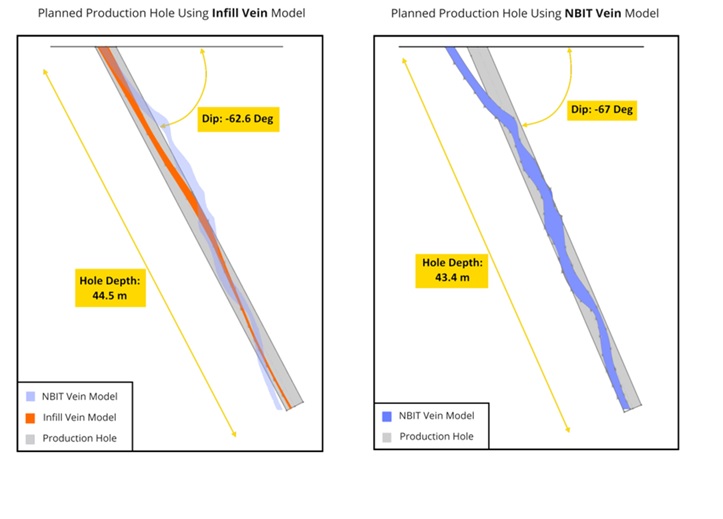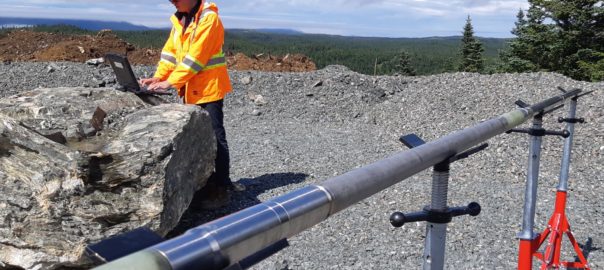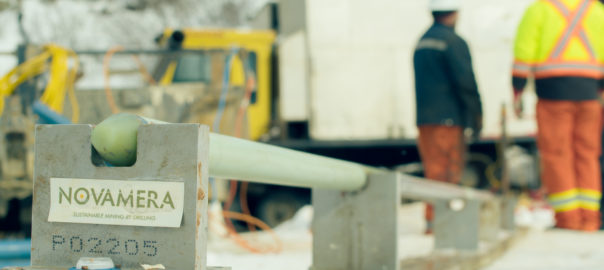Having completed a proof of concept of its entire surgical mining technologies portfolio in 2021, Novamera has furthered its credentials in the narrow-vein mining space by proving out its proprietary guidance tool in the same setting and testing out the ability to transport the concept to an underground mining environment.
Novamera’s proprietary hardware and software seamlessly combine with conventional drilling equipment, allowing mining companies to surgically extract deposits while minimising dilution, according to the company. Real-time data, machine learning and production analytics drive the ‘surgical mining cycle’ to make extraction of complex, narrow-vein deposits not only viable but highly profitable.
A low capital expenditure solution requiring minimal mine development, surgical mining presents miners with a flexible, scalable mining method that can help get into ore quickly with small-scale deposits, it says.
Working together with conventional drilling equipment and operations, the solution generates circa-95% less waste and less than half the greenhouse gas emissions of selective mining methods, according to Novamera. In addition, a closed-loop system is employed to minimise water discharge and real-time backfilling reduces environmental impact and tailings storage needs.
The 2021 proof of concept was designed to test the entire surgical mining system and process, which is made up of three steps. This includes drilling a hole with a standard NQ-sized diamond core rig and sending Novamera’s proprietary guidance tool down through the core barrel on wireline to image the orebody in high resolution and with close spacing; bringing in a large-diameter drill, coupled with the company’s course correction device and positioning control system, to drill to depth following the trajectory provided by the guidance tool and transporting the cuttings using reverse circulation air-lift assist; and backfilling the holes thereafter.
The latest in-field demonstration, completed in late 2022, took place in Baie Verte, Newfoundland, at the same Signal Gold-owned site (the Romeo and Juliet deposit). The trial highlighted the technical capabilities of the guidance tool, the operational impact of real-time data in a production setting and the economic potential of surgical mining, according to Novamera.
Carried out under the auspices of the Canada Mining Innovation Council (CMIC), the demonstration highlighted to the sponsors – OZ Minerals, Vale and an unnamed global gold producer among them – that the guidance tool was integral to effective surgical mining.
Dustin Angelo, CEO of Novamera, expanded on this.
“Throughout the technology development, we have had questions or statements about the ability to carry out the type of narrow-vein mining we are talking about by simply using a large diameter drill rig to extract the orebody following a conventional resource model,” he told IM. “The typical spacing a narrow-vein orebody is drilled on – traditional cross-cutting holes associated with exploration and infill work – is too wide to get the resolution needed for an exact picture of the orebody geometry.
“What we were able to demonstrate in the latest trial is that you need a tool like ours to collect, in real time, the amount of data required to accurately extract the orebody in question.”
Novamera demonstrated this in a March webinar, which highlighted the existing infill model at the Romeo and Julie deposit implied a large-diameter drill hole could be drilled on a 62° dip angle to accurately extract the orebody.
“In actuality when we imaged the hole and used our guidance tool, it suggested the orebody was on a 67° dip angle,” Angelo said. “We validated this assessment with data and then reconciled the results to show the impact.”
The original drill hole dip angle coordinates would have resulted in only 60% of the orebody being extracted, whereas Novamera’s guidance tool-aided drilling obtained 87% of the orebody.
“At the same time, the data coming back allowed us to locate where the other 13% would be, allowing the company to pick the remainder up with the next hole,” Angelo said.

Also part of the CMIC consortium, the company brought the guidance tool to an underground mine and was able to successfully operate it in that underground environment.
“We had never been underground, so we simply wanted to show we could take the tool underground, operate it and gather data in real time,” Angelo said.
Able to break the unit down into two pieces and mount the technology in stages on the drill rig, this was a pivotal demonstration for the company, opening up further possibilities with its solution.
“Novamera’s technologies can go underground; it is the large diameter drill we are piggybacking off that has issues due to its sheer size,” Angelo said. “We are working with OEMs and contractors to augment existing large diameter drilling equipment so it can be easily deployed in the confines of an underground deposit for the surgical mining application.”
In terms of the next steps for the technologies, Angelo was keen to fabricate a “course correction device” able to compensate for the impacts of gravity on drilling such holes and the rock dynamics at play, equip the drill rig with a 2-m-diameter cutting head (as opposed to the 1-m-diameter head used in the proof of concept), prove out the guidance tool at a number of sites to build up a “geological database” and then get to a full production test at a chosen mine site.
Such a mine site test was recently confirmed after the Government of Canada announced the 24 recipients of support selected through the Mining Innovation Commercialization Accelerator (MICA) Network’s second call for proposals. Novamera was named within this select pool, with the government granting it C$850,005 ($643,984) for a project to deploy its surgical mining technologies at the Hammerdown mine site, in Newfoundland, Canada, a site owned by Maritime Resources.
This project, which has a budget of circa-C$8 million – will see the company test out its technologies on a vein located outside the current proposed open-pit mine plan, demonstrating one use case where surgical mining can help mining companies add production to supplement the conventional method being employed.
Angelo said of such testing: “When we get to this point, it is no longer about simply a proof of concept, it is about demonstrating the capabilities and value of our technologies to enable surgical mining by reconciling the grade and tonnes associated with that mining exercise against an already established resource model.
“This is where we will really generate significant interest from the mining community, when we can show that we can help mining companies add production and extend mine life from currently uneconomic, steeply-dipping narrow vein deposits or zones in their mineral resource portfolio.”








